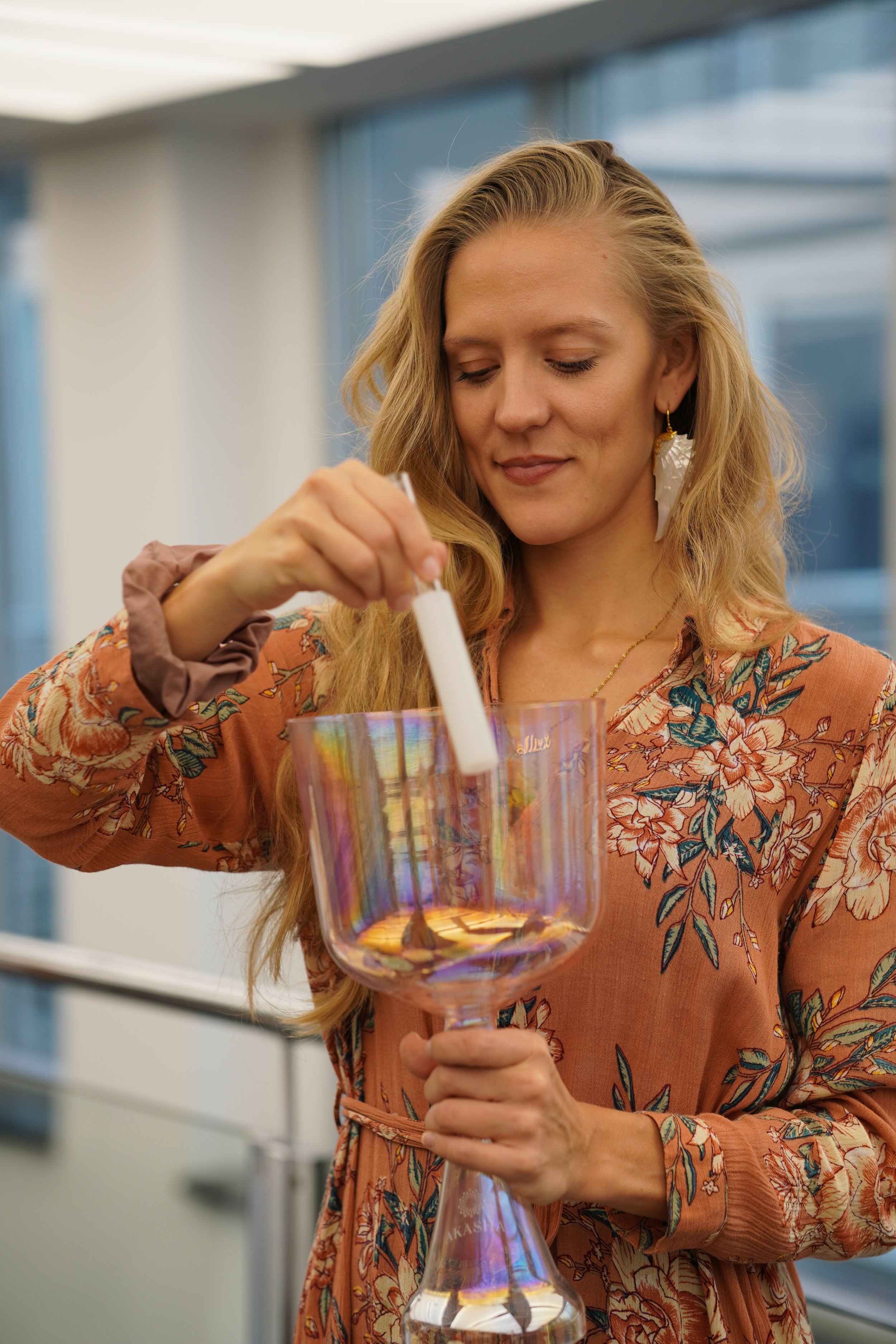Acupressure vs. Sonopressure - Research Data
In the last blog article, I introduced you to acupuncture and why it can be so wonderfully combined with Sound Healing.
In today's blog I would like to introduce you acupressure, as well as sonopressure and how you can use them in a Sound Meditation.
To get it out of the way:
Acupressure and sounds = Sonopressure
Acupressure is the stimulation of different acupuncture points by manual pressure alone. Here, needles are not used as in classical acupuncture. Thus, acupressure can be used by anyone, whereas acupuncture is reserved only for doctors and alternative practitioners, since it is purely legal "bodily harm", in which the patient should actively agree beforehand.
An acupressure should be performed with the thumb or thumbnail for 20-30 seconds, followed by a pause. This cycle can be repeated as many times as needed. Sonopressure is similar. Of course, attention should always be paid to how the patients or clients feel and thus everything should always be done in consultation with them. Of course, these exercises can also be given to the client after an hour, so that he can continue to stimulate the points with acupressure after the sonopressure.
Important acupressure and thus sonopressure points are the following:
Di 4 This point is located between the thumb and index finger in the reticular and elastic structure.
This point is said to be connected with the nerves of the spinal cord and thus generally help against pain. Especially pain in the area of the face, i.e. mouth, eyes and ears, this point often brings quick relief.
Gb 20 This point is located at the back of the head in the depression between the sternocleidomastoid and trapezius. It has a "wind eliminating" effect. Wind often causes tension and cold sensations in TCM. Also, this point is related to the vagus nerve and thus sono- or acupressure helps to activate the relaxation mechanisms in the body.
Ni 1 This point is located between the ball of the big toe and the ball of the little toe on the bottom of the foot. Just gently push the two balls of the toes apart and you can immediately feel the point. Kidney 1 is often used in the evening, as this point is said to help you relax and have a restful sleep. At the same time, it can also be invigorating if we sonopress it directly in the morning. Now here it all depends on your client and the time of the sound meditation.
Ma 40 This point is located four fingers width below the kneecap, in the depression between the tibia and the anterior tibial muscle. It is considered one of the most important acupressure points, as it is one of the master points in TCM. A lot of energy is concentrated here and a lot of energy can be moved. In general, it balances the stomach meridian and is therefore excellent for gastrointestinal problems. At the same time, this point is also used in competitive sports to increase performance and focus energies, but it also works wonders for exhaustion and causes stimulation of the immune system.
There are also "newer" acupuncture points, which were added only in recent decades, such as the "third eye" point directly between the eyebrows. This point is supposed to serve the centering and help to set and hold a focus.
If you would like to use the above points as a "sonopressure", simply use a suitable Sound Healing instrument, such as a Practitioner Crystal Bowl (e.g.: Dove Spirit AkashaBowls® crystal singing bowl) or tuning forks. Vibrate the instrument and press it on the respective acupressure point. Repeat this 3-5 times per point until the vibration is no longer noticeable. Feel free to do it more often if the client gives positive feedback and wants more.
I can highly recommend this book if you want to go deeper into this matter.
👁️👁️👁️ RESEARCH IN ACUPUNCTURE 👁️👁️👁️
Research carried out in Germany has shown that acupuncture may help relieve tension headaches and migraines.
The NCCIH note that it has been proven to help in cases of:
👁️ low back pain
👁️ neck pain
👁️ osteoarthritis
👁️ knee pain
👁️ headache and migraine
They list additional disorders that may benefit from acupuncture, but which require further scientific confirmation.
In 2003, the World Health Organization (WHO) listed a number of conditions in which they say acupuncture has been proven effective.
These include:
👁️ high and low blood pressure
👁️ chemotherapy-induced nausea and vomiting
👁️some gastric conditions, including peptic ulcer
👁️ painful periods
👁️ dysentery
👁️ allergic rhinitis
👁️ facial pain
👁️ morning sickness
👁️ rheumatoid arthritis
👁️ sprains
👁️ tennis elbow
👁️ sciatica
👁️ dental pain
👁️ reducing the risk of stroke
👁️ inducing labor
Other conditions for which acupuncture may be helpful, according to the WHO, but for which more direct evidence in the form of studies is still available, are: Fibromyalgia, Juralgia, Post-operative convalescence, Drug, tobacco and alcohol addiction, Spinal pain, Stiff neck, Vascular dementia, Whooping cough or Whooping coughTourette syndrome.
The WHO also notes that acupuncture can help with a number of infections, including some urinary tract infections and epidemic hemorrhagic fever. However, it points out that "only national health authorities can determine the diseases, symptoms and conditions for which acupuncture treatment may be recommended."
You want to learn more about how you can combine sound with other healing methods or learn more about sound healing, crystal singing bowls and sound meditation in general? Then find out now about one of my certified Sound Healing trainings at the Sound Medicine Institute Germany. It offers online and face-to-face trainings worldwide. In the Sound Medicine Course Level 2, the topic of acupressure is dealt with in greater depth.



